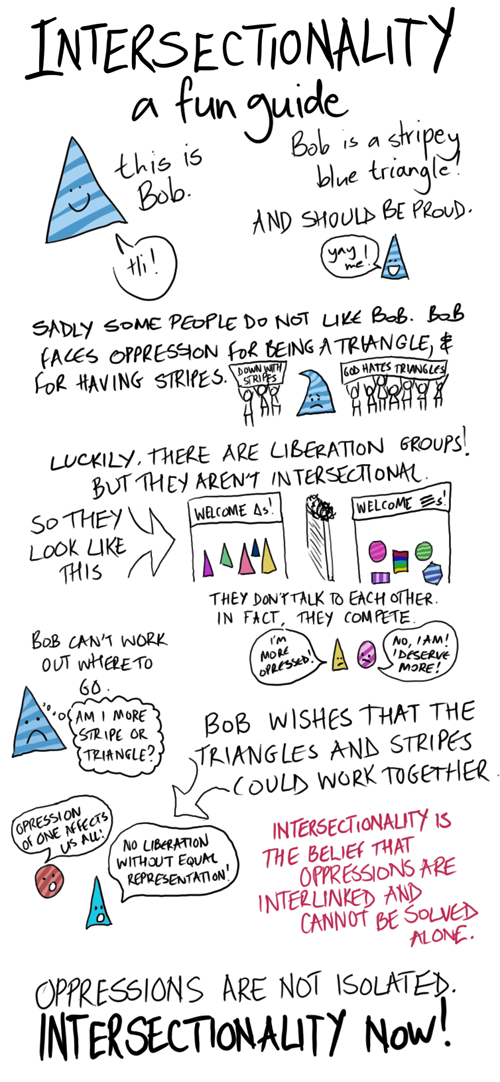Understanding intersectionality
Part of the 'Equity Change Project'
Introduction
Intersectionality is a framework for examining, deconstructing and challenging the idea that parts of a person’s identity are experienced as discrete categories. This section provides an understanding of intersectionality.
Lived experience of intersectionality
Here is a testimony from someone who has experienced the impact of a lack of understanding of their intersecting identity:
This is a personal one. I got diagnosed with breast cancer. And there’s been a few issues as I went through this cancer journey. I should acknowledge the health care system was very supportive. However, there were times when I felt I could have been treated better or maybe because of my colour there was an issue. The first one was – I was told I might have a mastectomy. And if I did, the question was: would I be given a prosthesis, to replace my breast. Unfortunately there’s no black ones. All of them were white.
Use the reflection on intersectional voices tool to reflect on this testimony.
Consider how dominant social views impact on people’s experiences, and how intersectionality can change this.
Where intersectionality comes from
Intersectionality is not a new way of viewing the world; it has been available as a lens for a hundred years, though it has been called different things during that time. It’s a tool that comes from grassroots Black feminism. Intersectionality was born in Black women’s experiences of simultaneous, multiple disadvantages and struggles for intersectional social justice. It has indigenous knowledges (IFSW, 2014) and the voice of people as experts by experience at its heart because it began as a way of making visible and naming the oppression that Black women faced through the intersection of racism and sexism.
Reflective question
How do the roots of intersectionality help to make it a tool for change?
Understanding intersectionality
It gives that thing a word. It gives a different dimension to everything.
Change Project participant
Intersectionality is a lens that enables us to see things differently, to focus in on details. For example, when you look at a single strand of hair it seems like one object. But when you look under the microscope, you can see that it’s made up of multiple components. When we look through the lens of intersectionality, we can see the intersecting elements of someone’s identity, and we can see how different aspects of oppression intersect and cause compound harm.
Intersectionality is a framework for examining, deconstructing and challenging the idea that parts of a person’s identity are experienced as discrete categories. It allows us to see and to talk about the interconnections and interdependencies. We can make visible and name the interdependent dimensions of lived experience and see how socially constructed aspects of identity, such as age, class, caste or gender, reduce people’s access to equity.
We are socialised into categorising things and people. This makes us more likely to use rules of thumb and stereotypes to make sense of other people. Intersectionality tells us to do the opposite. It allows us to question our biases and work towards a more inclusive approach. Through learning and practice, we can change our mindset to look at the whole, unique person in their whole, unique context.
Intersectionality makes what is happening visible and names things for what they are. For example, if someone is experiencing interconnected and intersecting racism and sexism, we can talk about this with them and explore how naming this can empower them to understand what is impacting on them. When we have a name for what we’re experiencing, we can take action to change it. We can specifically address each aspect of inequity while keeping in view how it interacts with other aspects. For example:
- For an organisation, this may look like having a named anti-racism strategy within an overall equity, diversity and inclusion programme.
- For an individual, this may look like naming what has happened to them in life story work to help make them make sense of their experiences

A guide to intersectionality.
Reflective questions
Can you think of situations when you have categorised people by one aspect of their identity?
What difference does it make to your view if you relate to people by understanding all the intersecting elements of their lives?
Use the tool below to reflect on what intersectionality is and the analogy of the intersection.
This tool helps you to reflect on what intersectionality is and how it relates to adult social care.